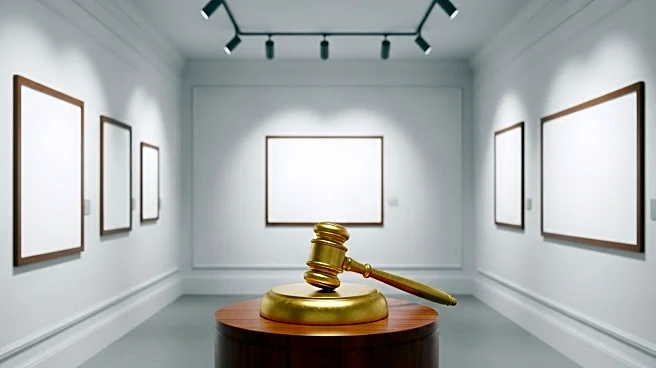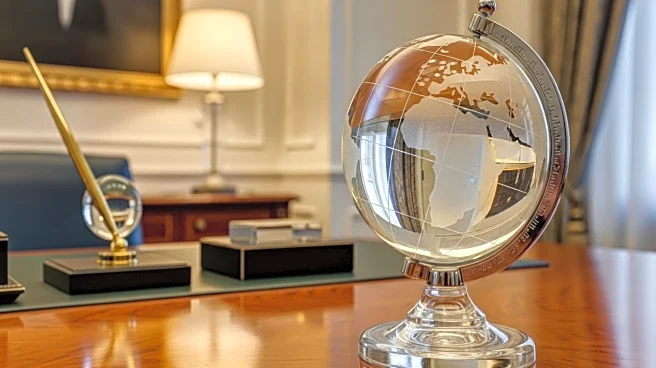What's Happening?
Sotheby's auction house has reported a significant increase in losses, totaling $248 million over the past year, as the art market continues to experience a downturn. The company, owned by billionaire Patrick Drahi, has seen its revenues from commissions and fees drop by 18% to $813 million. This decline is attributed to reduced spending by wealthy collectors, influenced by geopolitical and trade tensions. Additionally, Sotheby's faced high severance costs, amounting to $29.2 million, despite a minimal reduction in staff. The company, which operates in 40 countries, has expanded its offerings beyond art and books to include wine, diamonds, and financial services. Drahi acquired Sotheby's in 2019 and has since partnered with Abu Dhabi's ADQ to raise $1 billion for the company's turnaround.
Why It's Important?
The financial struggles of Sotheby's highlight the broader challenges facing the art market, which has been impacted by global economic uncertainties. The decline in collector spending reflects a cautious approach amid geopolitical tensions, affecting the profitability of auction houses. Sotheby's efforts to diversify its business model, including partnerships with sovereign wealth funds, underscore the need for innovative strategies to navigate market fluctuations. The company's losses also raise questions about the sustainability of high severance costs and the effectiveness of its operational adjustments. As a major player in the art industry, Sotheby's performance can influence market trends and investor confidence.
What's Next?
Sotheby's may continue to explore strategic partnerships and diversification to mitigate losses and stabilize its financial position. The collaboration with ADQ suggests potential for further investment and expansion in emerging markets. The company might also reassess its cost structure, particularly severance expenses, to improve profitability. As geopolitical tensions persist, Sotheby's and other auction houses may need to adapt their strategies to attract collectors and maintain market relevance. The art market's recovery will likely depend on broader economic conditions and the resolution of trade disputes.












